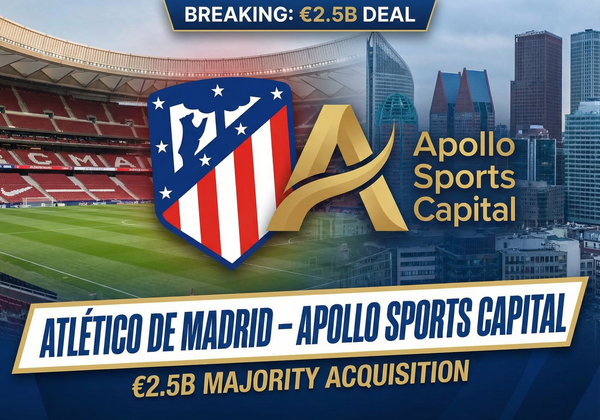The Life Cycle of a Private Equity Fund (Explained with Example)
What Is the Private Equity Fund Life Cycle?
The private equity (PE) fund life cycle is a highly structured, long-term process, usually spanning 10–12 years.
It governs how capital flows - from when investors (Limited Partners, or LPs) commit funds, to how General Partners (GPs) invest and manage companies, and finally to how profits are distributed.
For GPs, understanding each phase is essential for creating value. For LPs, it’s critical to know how and when returns will be realized.
In this guide, we’ll break down the 4 key stages of a private equity fund life cycle, explore the J-curve effect, and walk through a real-world case study.
Phase 1: Fundraising and Capital Commitment (Years 0–2)
This first stage sets the foundation for the fund.
- Fund Structuring: The GP defines the fund’s investment thesis (sector focus, geography, deal size), target fund size, fee structure, and team.
- Limited Partnership Agreement (LPA): The legal framework that outlines fees (commonly 2% management fee), profit sharing (often 80/20 with GPs earning carried interest), and restrictions.
- Capital Commitments: GPs raise money from LPs (pension funds, endowments, sovereign wealth funds, etc.) through roadshows. LPs pledge capital, which will be drawn down over time.
- First & Final Close: The fund officially launches after the First Close (minimum target achieved) and stops raising money at the Final Close.
Phase 2: Investment and Value Creation (Years 2–8)
This stage combines capital deployment and active management.
2.1 Investment Sub-Phase (Years 2–5) – Deploying Capital
- Capital Calls (Drawdowns): GPs request portions of committed capital to fund acquisitions.
- Leveraged Buyouts (LBOs): Companies are acquired using a mix of equity and debt to maximize returns.
- Deal Sourcing & Due Diligence: GPs target businesses aligned with the fund’s strategy, focusing on operational and financial improvements.
2.2 Value Creation Sub-Phase (Years 3–8) – Driving Growth
- Operational Improvements: Cost cutting, supply chain optimization, and tech upgrades.
- Management Upgrades: Bringing in new executives or advisors.
- Growth Strategies: Buy-and-Build strategies consolidate smaller rivals into a stronger platform company.
- Financial Engineering: Optimizing leverage and cash flow to boost equity value.
The J-Curve Effect in Private Equity
One of the most important dynamics for LPs is the J-curve, which illustrates how returns develop over time:
- Initial Dip (Years 1–4): Negative returns dominate as capital is drawn down and fees are paid, while exits are still years away.
- Early Ascent (Years 5–7): First successful exits begin, creating positive cash distributions.
- Upswing (Years 8–12): During the Harvest Period, exits accelerate and profits outweigh costs, producing strong overall returns.
Phase 3: Harvest and Realization (Years 7–12)
This stage, also known as the Harvest Period, is where value is realized and profits are distributed.
Exit Strategies Include:
- Trade Sale: Selling to a strategic buyer.
- IPO (Initial Public Offering): Taking the company public.
- Secondary Buyout: Selling to another private equity firm.
- Continuation Vehicle: Moving select assets into a new fund, giving LPs the choice of liquidity or reinvestment, while allowing GPs more time to grow high-performing companies.
Distributions:
Proceeds flow to LPs based on the distribution waterfall outlined in the LPA. LPs typically receive their capital back plus a preferred return before GPs earn carried interest.
Phase 4: Winding Down and Termination (Years 10+)
The final stage closes the fund legally and financially.
- Final Reporting: GPs provide comprehensive reports, including IRR (Internal Rate of Return) and MOIC (Multiple of Invested Capital).
- Clawback Provisions: Ensures GPs return excess carried interest if returns fall below agreed thresholds.
- Fund Termination: The fund is dissolved after all assets are sold, though extensions may be granted to liquidate remaining holdings.
Case Study: A Hypothetical Private Equity Fund
| Phase | Timeline | Action by GP (Fund V) | Company Status & Metrics |
|---|---|---|---|
| Fundraising | Years 0–2 | Raises $5B targeting mid-market industrials in Europe | Committed Capital: $5B. DPI: 0% |
| Investment | Year 3 | Capital call of $500M. Acquires EuroFab via LBO | Early negative returns (J-curve dip) |
| Value Creation | Years 4–8 | New CEO, streamlined supply chain, Buy-and-Build acquisitions | EBITDA grows from $150M → $350M. Valuation rises sharply |
| Harvest | Year 8 | Sells EuroFab to U.S. conglomerate for $4.5B | LPs receive strong distributions, J-curve turns positive |
| Winding Down | Year 11 | Final profits distributed, fund terminated | DPI: 1.8x, IRR: >20% |
FAQs: Private Equity Fund Life Cycle
Q: How long is a private equity fund life cycle?
A: Typically 10 years, with possible extensions of 2–4 years.
Q: What is the J-curve in private equity?
A: It shows how returns start negative (due to fees and investments) and later rise as exits generate profits.
Q: How do Limited Partners (LPs) make money?
A: They earn returns when portfolio companies are sold, usually receiving capital back plus profits before GPs earn carried interest.
Q: What are the main exit strategies in private equity?
A: Trade sales, IPOs, and secondary buyouts are the most common.
Conclusion
The private equity fund life cycle is a multi-phase process that balances long-term commitments, intensive management, and structured exits.
For GPs, mastering each phase is crucial to delivering strong returns. For LPs, understanding the cycle provides clarity on when capital is called, how value is created, and when distributions will flow.


